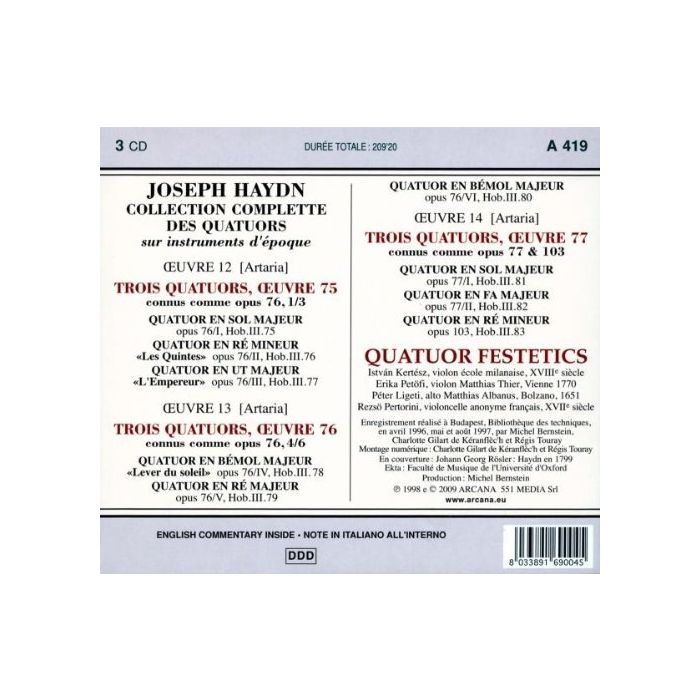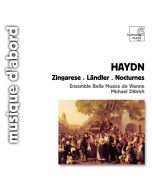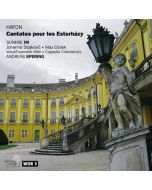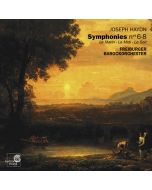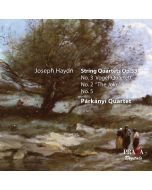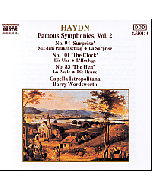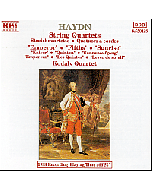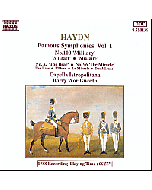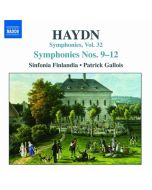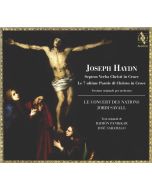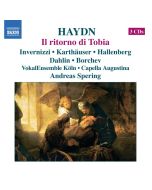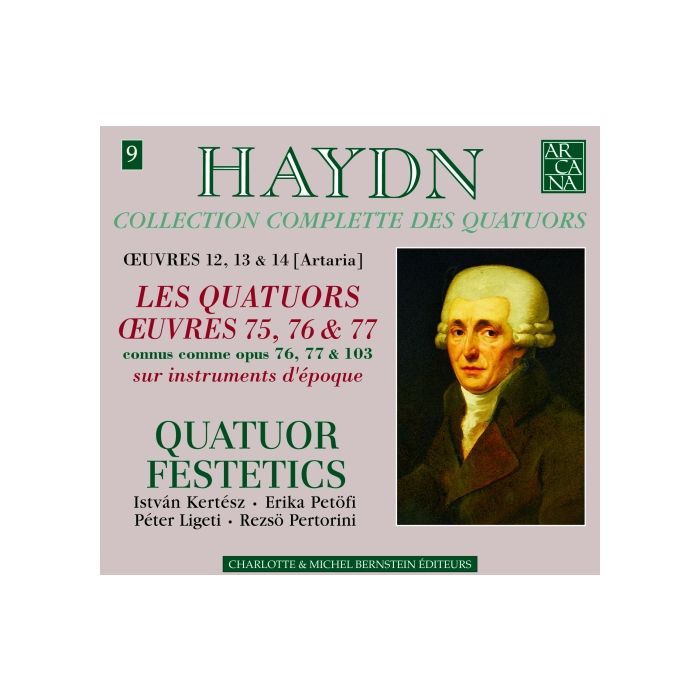
(Produkt nie został jeszcze oceniony)
kompozytor
Haydn, Joseph
tytuł
Haydn: Les Quatuors Œuvres 75, 76 & 77
wykonawcy
Quatuor Festetics
nr katalogowy
A 419
opis
JOSEPH HAYDN'S LAST QUARTETS
Towards the end of the 1790s, Haydn submitted for publication six quartets, today known as the Opus 76. These, along with the Opus 20 written twenty-five years earlier, during the Sturm and Drang period, are his most famous works in the genre. He had promised another collection of six but finished only two (the Opus 77) along with two movements of a third (known as Opus 103). During the same period, his student Beethoven composed his six Opus 18 quartets, and the eight compositions finished by Haydn must have caused certain problems of competition for the young master. As they are, the works contained in the present set represent not only the apogee of Haydn’s art but, above all, an essential moment in the history of music.
Contrary to what one might be led to believe by a persistent myth which was unknown to Mozart – that of the good Papa Haydn – the author of The Creation was an intellectual. Long isolated on his prince’s estate, he claimed a self-taught culture : deprived of contacts, he had no choice but to be original. Towards the end of his life, freed from the constraints of being a ceremonial servant, he lived more freely and tried to organize his output in the manner of an artist building his oeuvre. It was thus that in the letters sent to his editor Artaria, he sent off his production of the Opus 9 quartets. From this viewpoint – the quartet version of the Seven Last Words aside – there are fifty-eight quartets which were officially recognized by Haydn.
It was Artaria’s classification, approved by Haydn, that ARCANA has chosen to adopt for the complete recording of the quartets currently under way. Twenty- one of the 58 quartets are now available, representing seven out of the projected 19 records. At the outset, I had envisaged entrusting this monument to several different string quartets which would have speeded up matters. But, unable to oppose the FESTETICS QUARTET with another ensemble of comparable quality, it is increasingly certain that this excellent Hungarian quartet will carry the entire undertaking to term. The option of entrusting the project to the same artists moreover provides a more homogeneous, sharper interpretation of the trajectory which separates the Opus 103 from the Opus 9.
The use of period instruments for the performance of Haydn’s quartets adds a great deal in terms of sound colour and clarity. But it would be no more than an anectodal practice were it not backed by a philological approach based on a text as original as possible and a striving for comprehension of details of notation. This approach allows for a reading of a freshness and immediacy free from all routine, as if the works had been composed the day before. It favours the rethoric of the discourse as well as the characterization of every movement and every quartet.
It is commonly agreed that their recording of the Opus 17 represented the finest interpretation recorded by the FESTETICS QUARTET to date. This primacy risks being challenged by the present release. The vivacity of the rhythms, the exceptional beauty of the timbres, the homogeneity of the collective playing, the clarity of the discourse and the sense of contrasts rival with an expressivity of an almost Furtwänglerian weight in the slow movements. This vision, both scrupulous and innovative, cannot be compared with conventional versions, opening up as it does new horizons for tomorrow’s performers.
MICHEL BERNSTEIN
nośnik
CD x 3
wydawca
Arcana
data wydania
7.05.2009
EAN / kod kreskowy
8033891690045
119,00 zł
Produkt na zamówienie
Wysyłka ustalana indywidualnie.
Darmowa wysyłka dla zamówień powyżej 300 zł!
Darmowy kurier dla zamówień powyżej 500 zł!
sprawdź koszty wysyłki